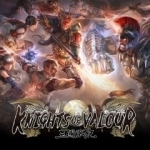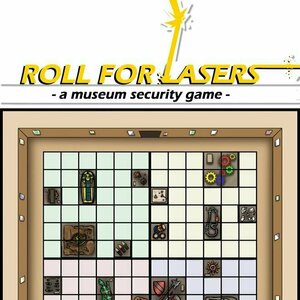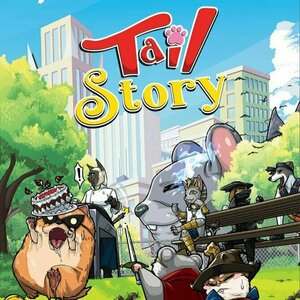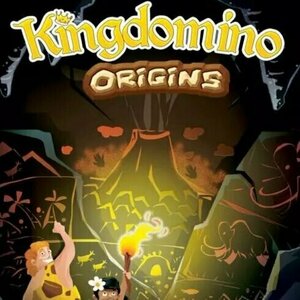
Knights of Valour
Video Game Watch
Arcade never dies! Experience the side-scrolling, beat 'em up arcade masterpiece! Based on the...
action

King Kwong: Larry Kwong, the China Clipper Who Broke the NHL Colour Barrier
Book
Who is Larry Kwong? He is the Canadian player who broke the colour barrier in the NHL. A man whose...

Drive Ahead! Sports
Games
App
Drive Ahead! Sports is sports with cars! Play soccer with a car! Challenge friends on the same...

Chinese Checkers-A.I. Enhanced
Games
App
Chinese Checkers (US and Canadian spelling) or Chinese chequers (UK spelling) is a strategy board...

Roll for Lasers
Tabletop Game
Our museum brings science and history together for people of all ages. From our Kids Zone engaging...

ScoreBoard Mini - Your Personal Score Keeper
Sports and Utilities
App
Best score keeping app for your apple watch. Simple score keeper app for your watch or phone. Simply...

THE KING OF FIGHTERS-i 2012(F)
Games and Entertainment
App
Famous paid app "THE KING OF FIGHTERS-i 2012" returns as a free app in order to celebrate the 20th...
Neil Hannon recommended Architecture & Morality by Orchestral Manoeuvres In The Dark in Music (curated)
Purple Phoenix Games (2266 KP) rated Tail Story in Tabletop Games
Jul 1, 2020
Disclaimer: We were provided with a preview copy of Tail Story for the purposes of this review. Some of the components pictured are not final, and will be addressed in production. Also, I do not intend to rehash the entire rulebook, but rather provide an overview of the rules and game flow. -L
Tail Story is a competitive card game in which players are racing to become the most memorable pet in history! How? By partaking in various events and gathering a total of 4 Achievements. Here’s how it works. To setup, each player takes a player mat, and randomly draws a Queue Card. Players then get to choose a Character card – a pet from either the Canine, Feline, or Rodent & Friends type. Shuffle the Event cards, deal 15 to each player, everyone draws 5 cards to their hand, and the game is ready to begin! The player who drew Queue Card 1 is the first player, and play continues in numerical order.
Each turn consists of 5 steps: Draw, Play, Bonus, Deck Check, and End of Turn. The first step is always to Draw 1 card from your deck. In the Play Step, you choose one action to perform. Each player has 2 Action Points (AP) per turn, and those are spent here in the Play Step. All Event cards require either 1 or 2 AP to play, and the other standard actions in the Play Step require either 0 or 1 AP to perform (Check out the Reference Cards pictured below to see the possible actions). After performing 1 action, you move to the Bonus Step, where a player may choose to activate a Bonus ability. The Deck Check step is next. All players count how many cards remain in their Draw piles. If all decks still have at least 1 card, you jump back to the Play Step and perform another action. If any deck is out of cards, that player reshuffles their discard pile, and places a card from their hand face-down on their player mat to signify that they have collected an Achievement. Even if another player collects an Achievement on your turn, play then returns to you, and you jump back to the Play Step again. The last step is the End of Turn – a player decides to be done and ends their turn, discarding their hand down to 5 cards. The game ends when a player has collected their 4th Achievement.
Here’s a neat twist though – whenever you play a card, any opponent can choose to play a Stop card to prevent you from performing that action! And then, if you have a Stop card too, you could play it to cancel out their Stop card. This twist adds a strategic and competitive element to the game that elevates it to the next level. There’s a fun little element of role-play too that encourages you to get into your animal character – I’ll leave that for you to discover on your own!
I know that seems like quite a lot, but once you get into the swing of things, Tail Story plays pretty quickly. One thing I particularly like about this game is that it requires a decent amount of strategy. Everyone is racing to get through their Draw decks and collect Achievements, while at the same time hindering the progress of their opponents. Are you willing to risk a valuable Stop card to cancel the action of an opponent and hope that they don’t play a Stop card back to you? Should you play a card that could activate your Bonus ability now or wait for your next action to pull a fast one over on your opponents? Your strategy has to be adjustable on the fly depending on what cards your opponents are playing. There is no single right strategy to win, and the riskiness makes the game more exciting and engaging.
Another thing I really like about Tail Story is that there are really only 4 different Event cards that can be played. Yes, the artwork may vary, but ultimately the actions are the same. They rely on key text and color coding to communicate their uses, and after a few rounds, recognizing those effects is easy. One thing I wish is that the reference cards had these effect explanation instead of only being listed in the rulebook. Just for a quick glance if you need a reminder instead of having to look back in the rules for the full text. The reference cards do have the Turn Steps and possible Actions on them, which are helpful – don’t get me wrong!
I would recommend Tail Story at the higher player counts for maximum enjoyment. With only 2 players, it feels like it drags on a bit because it is only a back-and-forth game. With 3-4 players, you have more opponents with which to interact, and playing cards against others doesn’t feel as targeted and keeps the game play more light-hearted than cut-throat.
Let’s talk about components. As I mentioned earlier, this is only a preview copy of the game, so some elements are still not finalized. The player mats are only paper right now, but I anticipate that they will be sturdier in final production. That being said, the information on the player mats is awesome. They provide enough information to understand where everything goes, while not being so wordy that they are confusing. I am excited to see what kind of color scheme they come up with for the player mats, to match the artwork of the cards. On to the cards – they are amazing. For starters, the cards are nice, sturdy, and thick. Definitely a game that will not easily succumb to bent corners or torn cards. The actual artwork of the cards is perfect. Each card is detailed, colorful, and appropriate for their respective card names. Probably the coolest part of the cards is that they all have a holographic finish on them. This really makes the artwork pop and makes you admire every card instead of just reading the text. That being said, the holographic finish makes the cards stick together a little more – not a huge detriment, but something to be aware of and careful with when drawing or playing cards! The game box is a cute little box with a magnet closure that is perfect for easy transportation.
Overall, I would say that I love Tail Story. It’s fun, fast-paced, strategic, and exciting. Being able to choose from 3 Character types (Canine, Feline, Rodent & Friends) gives you the opportunity to play a different game, with a different strategy, every time. With more plays, the special text of cards is engrained in your head, which means that it can play even faster and with no interruptions to check rules. It’s definitely a memorable game, and one that I can see myself pulling out often on game nights. I am excited to see this campaign launch, and for the sake of all animal dreams out there, you should check it out!
Purple Phoenix Games (2266 KP) rated Kingdomino Origins in Tabletop Games
Dec 28, 2021
Kingdomino Origins is a tile drafting and placement game set in prehistoric times for two to four players. Just like the original Kingdomino (even though this is titled Origins, which makes me chuckle) players will be drafting tiles from the offer and adding them to their village, matching terrain types to those already built. Instead of crowns to count VP, Origins has players using fire icons and tokens to multiply VP for endgame scoring. New for Origins is the ability to play three different modes: Discovery, Totem, and Tribe Mode! The player with the most VP at the end of the game wins!
DISCLAIMER: We were provided a copy of this game for the purposes of this review. This is a retail copy of the game, so what you see in these photos is exactly what would be received in your box. I do not intend to cover every single rule included in the rulebook, but will describe the overall game flow and major rule set so that our readers may get a sense of how the game plays. For more in depth rules, you may purchase a copy online or from your FLGS. -T
To setup (a two-player game playing the Tribe mode is used for this review), place the Cave Board on the table, shuffle the Caveman tiles, and deal four to the board. Separate the fire tokens and resourceeples into their piles on the table. Shuffle the main domino tiles and, as in the original, draw four, arrange them numerically, and reveal them to make the offer. Place another four domino tiles nearby, face-down, and arranged numerically. The players each choose a color, takes their starting tile with hut placed atop, and their two chiefeeples. The first player will choose to take tiles 1 and 4 or 2 and 3 from the offer by placing their chiefeeples upon them. The game is now setup for Tribe Mode and ready to begin!
On a normal turn, a player will have two steps to complete: Place a Domino, and Choose a New Domino. In a 3-4 player game, each player will have one domino to place, but in this 2 player game each player will have two dominoes to place within their 7×7 grid (a 5×5 grid with 3-4 player games). The player takes their chosen dominoes from beneath their chiefs and add them to their village grid. As in all domino-based games, the terrain (or side) of the domino must be placed adjacent to a matching terrain type in the village; the starting tile is wild and can match to any terrain type.
Once a domino is placed, if it shows icons or volcanoes, special rules are enacted. For icons showing resources, a wooden resourceeple is placed upon the icon. These come in mammoths, fish, mushrooms, and flints. In Tribe Mode, these will be used later. However, if a volcano is placed in the village, it will spew forth one to three flames, whose tokens will be placed on a domino square in the village. The volcano tile showing one active crater sends a flame soaring up to three squares away, and diagonal movement is acceptable. A volcano tile showing three active craters throws three flames (a fire token with three fire icons) one square away.
Once both tiles have been placed, the player will next Choose a New Domino (or dominoes when playing a two player game). From the now-revealed set of four new tiles in the offer, the players will choose their next tile(s) to be played during the next round, thus also creating the turn order for the next round.
After players have chosen their dominoes, and only in Tribe Mode, the final step to the turn is optional: Recruit a Caveman. Remember those resourceeples that were placed on tiles? By discarding two different resources, a player may recruit one of the face-up Caveman tiles from the board. By discarding one of each type of resource, the player may instead look through the stack of Caveman tiles and take one of their choosing. These Caveman tiles do many different things, but they primarily offer extra VP for being placed adjacent to specific resources, or by clumping together similar Cavemen in the village.
Once all the dominoes have been added to the villages, the game ends and VPs are counted for each player. The game comes with an excellent score pad to help keep track of the different ways to earn VP. The player with the most VP (“comfort points” in the game) is the winner and creates the most prosperous Caveman village!
Components. Just like previous versions of Kingdomino, these components are excellent. The domino tiles are again thick and glossy, the huts are again the 3D style, and the chiefeeples are similar in style to the kingeeples from the original. In this new version, however, new fire tokens have been added, and are fine, but they are double-sided to remind players how many squares they travel – an EXCELLENT idea. I have to also applaud these cute little resourceeples. They are so stinkin cute and look great on the villages. The art is again wonderful on everything in the box, and overall is just a great bunch of components.
What about the claim Dan King made about never playing Kingdomino again? Gosh darnit, I totally agree. By simply playing the included Discovery Mode you get all the same functionality of Kingdomino. But it doesn’t stop there. I didn’t really get into the second mode, Totem Mode, but it also uses the resourceeples to grant extra VP to the players who have collected the majority of each type. It is a great next step from Discovery, and a good setup for Tribe Mode, especially when playing with newer gamers.
So, the components are similar quality to the original version, but there are more components included, and provide three different play modes. The only thing I see that the original Kingdomino has on this version is the Age of Giants expansion. Perhaps something similar is in the works for Origins, where players can effectively negate opponents’ VPs. I’m sure giants existed in Caveman times, right?
All this said, I may be soon looking for a new home for my copy of Kingdomino and the Age of Giants expansion, as I am certainly agreeing with Dan here. I don’t think I have the interest in playing Kingdomino anymore, as long as I have Kingdomino Origins in my arsenal. Purple Phoenix Games gives this one a super-upgraded 5 / 6. The extra play modes, excellent components, and the cool volcano mechanics just elevate this superior version. If you are a fan of Kingdomino, then I highly recommend you check out Kingdomino Origins. Unless, of course, you don’t wish to be seduced away from your beloved copy of the original version. I understand, but you may be unnecessarily handicapping your collection.


